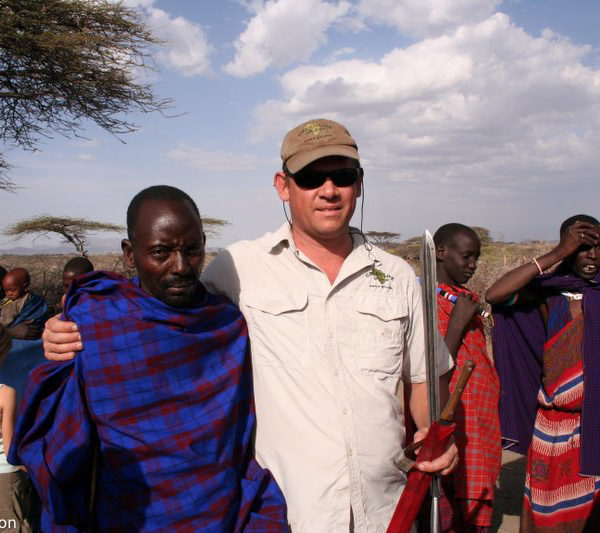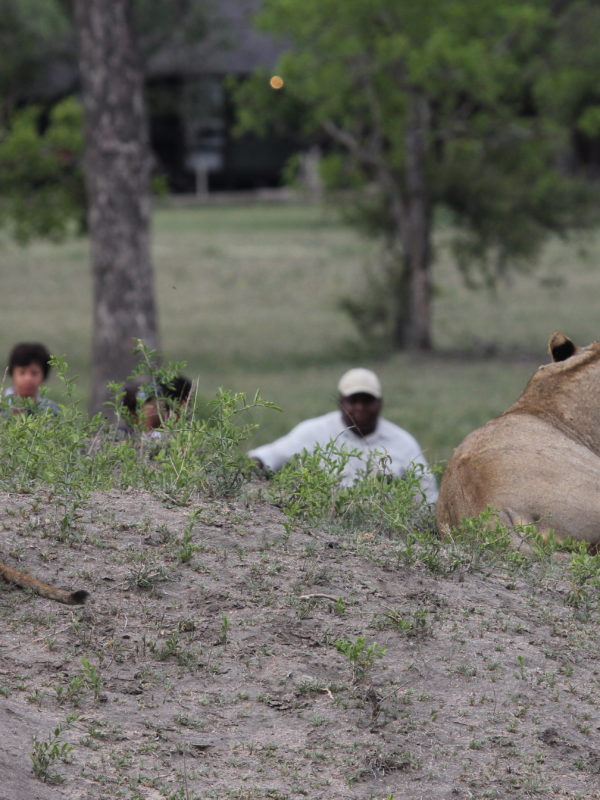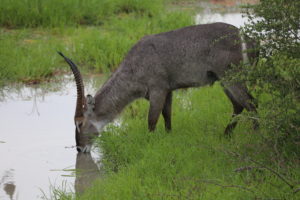The park has three main habitats: the riverbanks overhung with a thick fringe of foliage and large mahogony acacia and ‘upside down’ baobab trees; inland floodplains lined with mopane forest and interspersed with winterthorn trees and reed islands harbouring a myriad of wildlife; escarpment hills covered in broadleaf woodland.
The park covers a wide area but the escarpment acts as a kind of barrier keeping most animals in the bottom of the valley. This park is so beautiful that it is hard to know which to admire more, the scenery or the animals.
The Zambians who live along the Zambezi are very poor, yet their smiles are broad. They manage to eek out a meagre subsistence living on the banks of the river from catching fish and irrigating a few crops.
ANIMALS AND BIRDS
Wildlife seems less bothered by people when they are at water level and there are some spectacular opportunities in this park, to get close to animals from a canoe or boat. The tranquil river and floodplain scene is punctured by a huge variety of wildlife with antelopes and buffalo wandering in and out of the picture and herds of elephants up to 100 strong.
Baboons and vervet monkeys thrive here with their main enemy being the leopard. Lions prefer zebra or buffalo. Territorial hippos and huge crocodiles inhabit the river in abundance.
Bird watchers will be thrilled at the colorful array of birds including kingfishers, lovebirds, parrots and hornbills, and also upon hearing the distinctive ‘cry of Africa’ from majestic fish eagles.
Fishing is very popular in the Zambezi and the ‘striped river dog’ or tiger fish, attracts anglers from all over the world. They can be caught on fly, spinner or bait.
SEASONS
Zambia has three main seasons:
Hot Rainy Season: December to March is hot, humid and rainy with an abundance of insects. Lodges often close from December to March, as roads become impassable. Expect midday temperatures of at least 82°F (28°C)
Cool Dry Winter: May to September is cool and dry with pleasant mid-term temperatures around 75°F (24°C). Night temperatures go down to 46°F (8°C). Warm clothing is advisable for winter evenings.
Hot Dry Season: October and November becomes hotter reaching approximately 95°F (35°C).
The best time to visit Lochinvar is during the dry months from June to November.
LOWER ZAMBEZI SPECIALITIES
• Close encounters with big animals from a canoe or boat
• Bush walks and animal tracking
• Wading waterbuck and buffalo
• Beautiful scenery
• Tiger fishing
• Night game drives
• Elephants swimming
• Superb safari lodges located along the river
FACTS
Day and night game drives are an option
This is a malarial area





